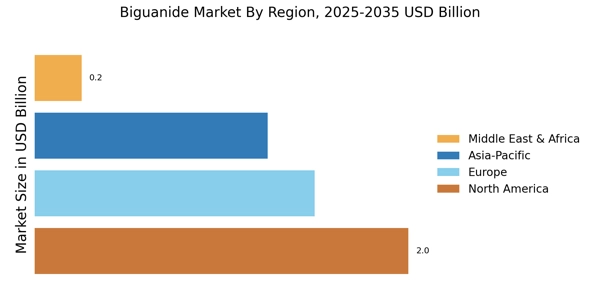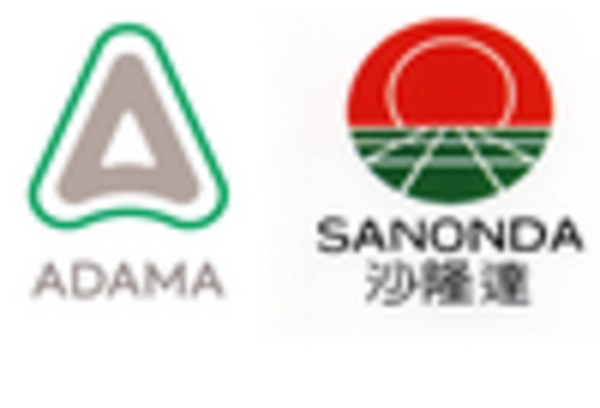Regulatory Support for Diabetes Medications
Regulatory bodies are increasingly supportive of the development and approval of diabetes medications, which may positively impact the Biguanide Market. Streamlined approval processes and incentives for innovative therapies are encouraging pharmaceutical companies to invest in biguanide research and development. For instance, the U.S. Food and Drug Administration has implemented programs aimed at expediting the review of diabetes treatments, which could lead to a faster introduction of new biguanide formulations. This regulatory environment fosters competition and innovation within the market, potentially resulting in a wider array of options for patients. As a result, the Biguanide Market may experience accelerated growth, driven by the influx of new products and improved treatment paradigms.
Increasing Prevalence of Metabolic Disorders
The rising incidence of metabolic disorders, particularly diabetes and obesity, appears to be a primary driver for the Biguanide Market. According to recent data, the prevalence of diabetes has been steadily increasing, with estimates suggesting that over 400 million individuals are currently affected. This growing patient population necessitates effective management solutions, thereby propelling the demand for biguanide-based medications. Furthermore, the World Health Organization indicates that obesity rates have doubled since 1980, which correlates with the rising demand for biguanides as a treatment option. As healthcare systems strive to address these challenges, the Biguanide Market is likely to experience substantial growth, driven by the need for innovative therapeutic solutions.
Rising Healthcare Expenditure on Chronic Diseases
The increasing healthcare expenditure on chronic diseases, particularly diabetes, is a significant driver for the Biguanide Market. As healthcare systems allocate more resources to manage chronic conditions, the demand for effective treatment options, including biguanides, is likely to rise. Data indicates that healthcare spending on diabetes management has surged, with projections suggesting that it could reach trillions of dollars in the coming years. This financial commitment underscores the importance of effective therapies in managing diabetes and its complications. Consequently, the Biguanide Market is expected to benefit from this trend, as healthcare providers seek cost-effective and efficacious solutions to address the growing burden of chronic diseases.
Technological Advancements in Drug Delivery Systems
Technological innovations in drug delivery systems are poised to enhance the efficacy of biguanide medications, thereby influencing the Biguanide Market. Recent advancements in nanotechnology and sustained-release formulations may improve the bioavailability and therapeutic outcomes of biguanides. For instance, the development of smart delivery systems that respond to physiological changes could optimize dosing regimens and minimize side effects. This evolution in drug formulation technology is expected to attract both healthcare providers and patients, as it offers a more tailored approach to diabetes management. Consequently, the Biguanide Market may witness an uptick in product offerings that leverage these advancements, potentially leading to increased market penetration and consumer acceptance.
Growing Awareness and Education on Diabetes Management
The increasing awareness and education surrounding diabetes management are likely to bolster the Biguanide Market. Public health campaigns and educational initiatives have been instrumental in informing patients about the importance of managing diabetes effectively. As individuals become more knowledgeable about their health conditions, the demand for effective treatment options, including biguanides, is expected to rise. Moreover, healthcare professionals are increasingly advocating for the use of biguanides due to their proven efficacy and safety profiles. This heightened awareness may lead to a greater acceptance of biguanide therapies, thereby driving market growth. The Biguanide Market stands to benefit from this trend as more patients seek out effective solutions for their diabetes management.


















Leave a Comment